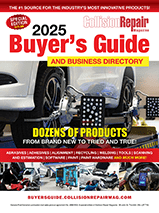CHATTANOOGA, Tenn.–(BUSINESS WIRE)–U.S. Xpress Enterprises, Inc. (NYSE:USX) (the “Company”) today announced results for the second quarter of 2020.
Second Quarter 2020 Financial Highlights
- Operating revenue of $422.5 million compared to $413.9 million in the second quarter of 2019
- Operating income of $16.3 million compared to $8.8 million in the second quarter of 2019
- Operating ratio of 96.1% compared to 97.9% in the second quarter of 2019
- Adjusted operating ratio1, a non-GAAP measure, of 95.9% compared to 97.5% in the second quarter of 2019
- Net income attributable to controlling interest of $9.5 million, or $0.18 per diluted share, compared to $2.7 million in the second quarter of 2019, or $0.05 per diluted share
Second Quarter Financial Performance
|
Quarter Ended June 30, |
|
Six Months Ended June 30, |
|||||||||||
|
2020 |
2019 |
|
2020 |
2019 |
|||||||||
| Operating revenue |
$ |
422,477 |
|
$ |
413,862 |
|
$ |
855,045 |
|
$ |
829,225 |
|
|
| Revenue, excluding fuel surcharge |
$ |
393,964 |
|
$ |
371,184 |
|
$ |
786,784 |
|
$ |
746,496 |
|
|
| Operating income |
$ |
16,277 |
|
$ |
8,787 |
|
$ |
12,609 |
|
$ |
21,425 |
|
|
| Adjusted operating income1 |
$ |
16,277 |
|
$ |
9,317 |
|
$ |
12,609 |
|
$ |
25,355 |
|
|
| Operating ratio |
|
96.1 |
% |
|
97.9 |
% |
|
98.5 |
% |
|
97.4 |
% |
|
| Adjusted operating ratio1 |
|
95.9 |
% |
|
97.5 |
% |
|
98.4 |
% |
|
96.6 |
% |
|
| Net income attributable to controlling interest |
$ |
9,498 |
|
$ |
2,672 |
|
$ |
282 |
|
$ |
7,393 |
|
|
| Adjusted net income attributable to controlling interest1 |
$ |
9,498 |
|
$ |
2,912 |
|
$ |
2,282 |
|
$ |
10,182 |
|
|
| Earnings per diluted share |
$ |
0.18 |
|
$ |
0.05 |
|
$ |
(0.00 |
) |
$ |
0.15 |
|
|
| Adjusted earnings per diluted share1 |
$ |
0.18 |
|
$ |
0.06 |
|
$ |
0.04 |
|
$ |
0.21 |
|
|
Eric Fuller, President and CEO, commented, “I am very pleased with our second quarter results as we are beginning to see the tangible, financial benefits of our strategic initiatives focused on utilizing technology to improve our processes, accelerate the velocity of our business, improve our customers’ and drivers’ satisfaction, and lower our costs. The approximate 500 basis points of sequential margin improvement we achieved exceeded normal seasonality. The successful launch of our digital fleet, ongoing success in reducing overhead costs, better safety performance, and lower fuel costs more than offset a sequential decrease in revenue per mile in our Over-the-Road division as there continued to be excess tractor capacity relative to freight demand in the market for a majority of the quarter due in part to COVID-19.”
Mr. Fuller continued, “A major digital initiative that we have been working on over the last two years has been the development, launch, and ramp of our digital fleet. This fleet is largely recruited, planned, dispatched, and managed using artificial intelligence and digital platforms. We developed the concept as a hypothesis in 2018 based in part on the business models of the digital freight brokerages. During 2019, we began building our technology leadership and teams to construct the necessary databases, applications, and processes to launch a pilot fleet with a small number of trucks in the fourth quarter of 2019. The test was successful and we expanded the pilot fleet to approximately 100 trucks in the first quarter. Given the positive results of the first quarter pilot we moved to a full production model, scaling the business to approximately 400 trucks in the second quarter of 2020. Phase one of our plan is to convert a total of 900 Over-the-Road solo trucks, with the lowest returns, to our digital platform over the next few quarters. Phase two of our plan will be to potentially convert an additional 1,200 trucks over the next couple of years. While the conversion will not be linear, we expect our margins to expand further.”
Enterprise Update
Operating revenue was $422.5 million, an increase of $8.6 million compared to the second quarter of 2019. The increase was primarily attributable to increased revenues in the Company’s Truckload division of $16.2 million, an increase of $6.6 million in Brokerage revenue, and decreased fuel surcharge revenues of $14.2 million. Excluding the impact of fuel surcharges, second quarter revenue increased $22.8 million to $394.0 million, an increase of 6.1% as compared to the prior year quarter.
Operating income for the second quarter of 2020 was $16.3 million which compares favorably to the $8.8 million in the second quarter of 2019. Operating ratio for the second quarter of 2020 was 96.1% compared to 97.9% in the prior year quarter.
Net income attributable to controlling interest for the second quarter of 2020 was $9.5 million compared to $2.7 million in the prior year quarter. Adjusted net income attributable to controlling interest1 for the second quarter of 2020 was $9.5 million, compared to $2.9 million in the 2019 quarter. Earnings per diluted share were $0.18 for the second quarter of 2020 and adjusted earnings per diluted share1 were $0.18.
Truckload Segment
|
Quarter Ended June 30, |
|
Six Months Ended June 30, |
|||||||
|
2020 |
2019 |
|
2020 |
2019 |
|||||
| Over the road | |||||||||
| Average revenue per tractor per week* |
$ |
3,558 |
$ |
3,625 |
$ |
3,511 |
$ |
3,621 |
|
| Average revenue per mile* |
$ |
1.855 |
$ |
1.956 |
$ |
1.863 |
$ |
1.970 |
|
| Average revenue miles per tractor per week |
|
1,918 |
|
1,853 |
|
1,884 |
|
1,838 |
|
| Average tractors |
|
3,825 |
|
3,611 |
|
3,830 |
|
3,614 |
|
| Dedicated | |||||||||
| Average revenue per tractor per week* |
$ |
4,122 |
$ |
4,018 |
$ |
4,095 |
$ |
3,990 |
|
| Average revenue per mile* |
$ |
2.351 |
$ |
2.355 |
$ |
2.363 |
$ |
2.346 |
|
| Average revenue miles per tractor per week |
|
1,753 |
|
1,706 |
|
1,733 |
|
1,700 |
|
| Average tractors |
|
2,739 |
|
2,674 |
|
2,721 |
|
2,666 |
|
| Consolidated | |||||||||
| Average revenue per tractor per week* |
$ |
3,793 |
$ |
3,792 |
$ |
3,753 |
$ |
3,777 |
|
| Average revenue per mile* |
$ |
2.051 |
$ |
2.118 |
$ |
2.061 |
$ |
2.123 |
|
| Average revenue miles per tractor per week |
|
1,849 |
|
1,791 |
|
1,821 |
|
1,779 |
|
| Average tractors |
|
6,564 |
|
6,285 |
|
6,551 |
|
6,280 |
|
| * Excluding fuel surcharge revenues | |||||||||
The Truckload segment achieved an operating ratio of 94.6% and an adjusted operating ratio1 of 94.1% for the second quarter of 2020, a 340 and 350 basis point improvement, respectively, compared to the operating ratio of 98.0% and the adjusted operating ratio1 of 97.6% achieved in the second quarter of 2019. This improvement was achieved despite a 3.2% decline in average revenue per mile as the Company continued to execute on its digital initiatives while maintaining a focus on reducing fixed and variable costs.
In the Over-the-Road division, the persistent oversupply of tractors relative to market demand continued to pressure spot pricing lower compared to the 2019 quarter. Contract revenue per mile was down year over year by approximately 5%. Average revenue per tractor per week declined 1.8% compared with the second quarter of 2019. Average revenue per mile decreased 5.2% compared with the 2019 quarter.
Mr. Fuller added, “The Over-the-Road division experienced substantial improvement in the second quarter driven by the conversion of an additional 300 of our lowest performing tractors into our digital fleet. This conversion helped drive our OTR utilization up by 3.5%, as compared to the first quarter of 2020, while contributing to a reduction in both our fixed and variable costs.”
The Dedicated division’s average revenue per tractor per week increased $104 per tractor per week, or 2.6% compared to the second quarter of 2019 on relatively flat average revenue per mile and higher miles per tractor. The fluctuations in volume in the general freight market and in specific industries related to COVID-19 have not negatively impacted the volumes of the Company’s major Dedicated accounts, which are concentrated in the discount retail and grocery market sectors.
Mr. Fuller concluded, “Our Dedicated division continued to perform very well in the second quarter having delivered its fifth consecutive quarter of record productivity. Average revenue per tractor per week expanded from the first quarter, to $4,122, while we grew the truck count in this division by 1.3%. I continue to be very pleased with our team’s execution and we remain focused on organically growing the Dedicated division given the stability that we believe this business provides through economic cycles.”
Brokerage Segment
|
Quarter Ended June 30, |
|
Six Months Ended June 30, |
|||||||||||
|
2020 |
2019 |
|
2020 |
2019 |
|||||||||
| Brokerage revenue |
$ |
46,029 |
|
$ |
39,457 |
|
$ |
96,505 |
|
$ |
85,701 |
|
|
| Gross margin % |
|
8.1 |
% |
|
16.1 |
% |
|
5.8 |
% |
|
16.9 |
% |
|
| Load Count |
|
40,933 |
|
|
29,701 |
|
|
84,426 |
|
|
63,520 |
|
|
The Brokerage segment continues to provide additional selectivity for the Company’s assets to optimize yield while at the same time offering more capacity solutions to customers. Brokerage segment revenue increased to $46.0 million in the second quarter of 2020 compared to $39.5 million in the second quarter of 2019, primarily as a result of increased load count partially offset by decreased revenue per load. Brokerage operating loss was $4.2 million in the second quarter of 2020 as compared to operating income of $1.3 million in the year ago quarter. Management will continue to focus on improving margins in this segment over the next few quarters.
Liquidity and Capital Resources
At the end of the second quarter 2020, the Company had $140.4 million of liquidity (defined as cash plus availability under the Company’s revolving credit facility), an increase of approximately $45 million from the first quarter, $381.6 million of net debt (defined as long-term debt, including current maturities, less cash balances), and $240.2 million of total stockholders’ equity.
The Company expects its net capital expenditures to approximate $100 to $120 million for the full year of 2020, which includes an approximate $20 million transaction that carried over from the fourth quarter of 2019. The Company will continue to monitor market conditions and may further reduce its planned capital expenditures as prudent. Through June 30, 2020, net capital expenditures were $65.0 million including the carryover $20 million from 2019.
COVID – 19 Business Update
- Continued unwavering focus on employee health and safety for both driving and non-driving team members – over 95% of Company’s corporate office staff continue working from home
- The Company’s volumes through the second quarter remained consistent primarily as result of the Company’s customer mix
- The Company remains confident in its current liquidity position and does not anticipate material liquidity constraints
Outlook
The Company’s baseline assumptions for the balance of 2020 include a general sequential economic recovery that may be volatile nationally or by region at times, a muted increase of capacity, and a relatively benign cost inflation, which should allow for a more favorable rate environment over the next several quarters. Based on these assumptions, we expect our internal initiatives around digitization and cost management, combined with our continued strength in Dedicated and an improving rate outlook have us well positioned to continue improving our margins through 2021.
Conference Call
The Company will hold a conference call to discuss its second quarter results at 5:00 p.m. (Eastern Time) on July 28, 2020. The conference call can be accessed live over the by phone dialing 1-877-423-9813 or, for international callers, 1-201-689-8573 and requesting to be joined to the U.S. Xpress Second Quarter 2020 Earnings Conference Call. A replay will be available starting at 8:00 p.m. (Eastern Time) on July 28, 2020, and can be accessed by dialing 1-844-512-2921 or, for international callers, 1-412-317-6671. The passcode for the replay is 13706047. The replay will be available until 11:59 p.m. (Eastern Time) on August 4, 2020.
Interested investors and other parties may also listen to a simultaneous webcast of the conference call by logging onto the investor relations section of the Company’s website at investor.usxpress.com. The online replay will remain available for a limited time beginning immediately following the call. Supplementary information for the conference call will also be available on this website.
(1) Non-GAAP Financial Measures
In addition to our net income determined in accordance with U.S. generally accepted accounting principles (‘‘GAAP’’), we evaluate operating performance using certain non-GAAP measures, including Adjusted Operating Ratio, Adjusted Operating Income, Adjusted Net Income Attributable to Controlling Interest, and Adjusted EPS (on a consolidated and, as applicable, segment basis). Management believes the use of non-GAAP measures assists investors and securities analysts in understanding the ongoing operating performance of our business by allowing more effective comparison between periods. Further, management uses non-GAAP Adjusted Operating Ratio, Adjusted Operating Income, Adjusted Net Income Attributable to Controlling Interest, and Adjusted EPS measures on a supplemental basis to remove items that may not be an indicator of performance from period-to-period. The non-GAAP information provided is used by our management and may not be comparable to similar measures disclosed by other companies. The non-GAAP measures used herein have limitations as analytical tools and should not be considered measures of income generated by our business or discretionary cash available to us to invest in the growth of our business. You should not consider the non-GAAP measures used herein in isolation or as substitutes for analysis of our results as reported under GAAP. Management compensates for these limitations by relying primarily on GAAP results and using non-GAAP financial measures on a supplemental basis.
Pursuant to the requirements of Regulation G and Regulation S-K, we have provided reconciliations of Adjusted Operating Ratio, Adjusted Operating Income, Adjusted Net Income Attributable to Controlling Interest, and Adjusted EPS to the most comparable GAAP financial measures at the end of this press release.
About U.S. Xpress Enterprises
Founded in 1985, U.S. Xpress Enterprises, Inc. is the nation’s fifth largest asset-based truckload carrier by revenue, providing services primarily throughout the United States. We offer customers a broad portfolio of services using our own truckload fleet and third-party carriers through our non-asset-based truck brokerage network. Our modern fleet of tractors is backed up by a team of committed professionals whose focus lies squarely on meeting the needs of our customers and our drivers.
Forward-Looking Statements
This press release contains certain statements that may be considered forward-looking statements within the meaning of Section 27A of the Securities Act of 1933, as amended, and Section 21E of the Securities Exchange Act of 1934, as amended, and such statements are subject to the safe harbor created by those sections and the Private Securities Litigation Reform Act of 1995, as amended. Such statements may be identified by their use of terms or phrases such as “expects,” “estimates,” “projects,” “believes,” “anticipates,” “plans,” “intends,” “outlook,” “strategy,” “optimistic,” “will,” “could,” “should,” “may,” “focus,” “seek,” “potential,” “continue,” “goal,” “target,” “objective,” derivations thereof, and similar terms and phrases. In this press release, such statements may include, but are not limited to, statements in the “Outlook” section, statements regarding the freight environment, expected margins, including operating ratio or adjusted operating ratio, the expected impact of our driver, digital fleet, frictionless order and other initiatives, and any other statements concerning: any projections of earnings, revenues, cash flows, capital expenditures, compliance with financial covenants, or other financial items; any statement of plans, strategies, or objectives for future operations; any statements regarding future economic or industry conditions or performance; any statements regarding our responses to COVID-19 and the associated economic conditions; and any statements of belief and any statements of assumptions underlying any of the foregoing. Forward-looking statements are based upon the current beliefs and expectations of our management and are inherently subject to risks and uncertainties, some of which cannot be predicted or quantified, which could cause future events and actual results to differ materially from those set forth in, contemplated by, or underlying the forward-looking statements. The following factors, among others, could cause actual results to differ materially from those in the forward-looking statements: general economic conditions, including inflation and consumer spending; political conditions and regulations, including future changes thereto; changes in tax laws or in their interpretations and changes in tax rates; future insurance and claims experience, including adverse changes in claims experience and loss development factors, or additional changes in management’s estimates of liability based upon such experience and development factors that cause our expectations of insurance and claims expense to be inaccurate or otherwise impacts our results; impact of pending or future legal proceedings; future market for used revenue equipment and real estate; future revenue equipment prices; future capital expenditures, including equipment purchasing and leasing plans and equipment turnover (including expected trade-ins); fleet age; future depreciation and amortization; changes in management’s estimates of the need for new tractors and trailers; future ability to generate sufficient cash from operations and obtain financing on favorable terms to meet our significant ongoing capital requirements; our ability to maintain compliance with the provisions of our credit agreement; freight environment, including freight demand, rates, capacity, and volumes; future asset utilization; loss of one or more of our major customers; our ability to renew dedicated service offering contracts on the terms and schedule we expect; surplus inventories, recessionary economic cycles, and downturns in customers’ business cycles; strikes, work slowdowns, or work stoppages at the Company, customers, ports, or other shipping related facilities; increases or rapid fluctuations in fuel prices, as well as fluctuations in surcharge collection, including, but not limited to, changes in customer fuel surcharge policies and increases in fuel surcharge bases by customers; interest rates, fuel taxes, tolls, and license and registration fees; increases in compensation for and difficulty in attracting and retaining qualified professional drivers and independent contractors; seasonal factors such as harsh weather conditions that increase operating costs; competition from trucking, rail, intermodal, and brokerage (including digital brokerage) competitors; regulatory requirements that increase costs, decrease efficiency, or reduce the availability of drivers, including revised hours-of-service requirements for drivers and the Federal Motor Carrier Safety Administration’s Compliance, Safety, Accountability program that implemented new driver standards and modified the methodology for determining a carrier’s Department of Transportation safety rating; future safety performance; our ability to reduce, or control increases in, operating costs; future third-party service provider relationships and availability; execution of the Company’s current business strategy or changes in the Company’s business strategy; the ability of the Company’s infrastructure to support future organic or inorganic growth; our ability to identify acceptable acquisition candidates, consummate acquisitions, and integrate acquired operations; our ability to adapt to changing market conditions and technologies, including the future use of autonomous tractors; disruptions to our information technology; the cost of and our ability to effectively and efficiently implement technology initiatives; costs, diversion of management’s attention, and potential payments made in connection with the multiple class action lawsuits a stockholder derivative lawsuit arising out of our IPO; changes in methods of determining LIBOR or replacement of LIBOR; credit, reputational and relationship risks of certain of our current and former equity investments; risks arising from our Mexican operations; our ability to maintain effective internal controls without material weaknesses, as well as remediate the existing material weakness; and the impact of the recent coronavirus outbreak or other similar outbreaks Readers should review and consider these factors along with the various disclosures by the Company in its press releases, stockholder reports, and filings with the Securities and Exchange Commission. We disclaim any obligation to update or revise any forward-looking statements to reflect actual results or changes in the factors affecting the forward-looking information.
| Condensed Consolidated Income Statements (unaudited) | ||||||||||||||||
|
Quarter Ended June 30, |
|
Six Months Ended June 30, |
||||||||||||||
| (in thousands, except per share data) |
2020 |
|
2019 |
|
2020 |
|
2019 |
|||||||||
| Operating Revenue: | ||||||||||||||||
| Revenue, excluding fuel surcharge |
$ |
393,964 |
|
$ |
371,184 |
|
$ |
786,784 |
|
$ |
746,496 |
|
||||
| Fuel surcharge |
|
28,513 |
|
|
42,678 |
|
|
68,261 |
|
|
82,729 |
|
||||
| Total operating revenue |
|
422,477 |
|
|
413,862 |
|
|
855,045 |
|
|
829,225 |
|
||||
| Operating Expenses: | ||||||||||||||||
| Salaries, wages and benefits |
|
139,987 |
|
|
130,521 |
|
|
275,381 |
|
|
255,084 |
|
||||
| Fuel and fuel taxes |
|
29,874 |
|
|
47,374 |
|
|
70,197 |
|
|
94,278 |
|
||||
| Vehicle rents |
|
21,335 |
|
|
18,579 |
|
|
43,212 |
|
|
37,555 |
|
||||
| Depreciation and amortization, net of (gain) loss |
|
26,283 |
|
|
24,752 |
|
|
52,086 |
|
|
47,814 |
|
||||
| Purchased transportation |
|
117,366 |
|
|
112,579 |
|
|
247,120 |
|
|
226,584 |
|
||||
| Operating expense and supplies |
|
28,126 |
|
|
29,968 |
|
|
57,800 |
|
|
57,913 |
|
||||
| Insurance premiums and claims |
|
21,283 |
|
|
19,266 |
|
|
47,306 |
|
|
43,619 |
|
||||
| Operating taxes and licenses |
|
3,720 |
|
|
3,406 |
|
|
7,397 |
|
|
6,579 |
|
||||
| Communications and utilities |
|
2,256 |
|
|
2,185 |
|
|
4,708 |
|
|
4,450 |
|
||||
| Gain on sale of subsidiary |
|
– |
|
|
(670 |
) |
|
– |
|
|
(670 |
) |
||||
| General and other operating |
|
15,970 |
|
|
17,115 |
|
|
37,229 |
|
|
34,594 |
|
||||
| Total operating expenses |
|
406,200 |
|
|
405,075 |
|
|
842,436 |
|
|
807,800 |
|
||||
| Operating Income |
|
16,277 |
|
|
8,787 |
|
|
12,609 |
|
|
21,425 |
|
||||
| Other Expenses (Income): | ||||||||||||||||
| Interest Expense, net |
|
4,862 |
|
|
5,296 |
|
|
10,283 |
|
|
10,899 |
|
||||
| Equity in loss of affiliated companies |
|
– |
|
|
90 |
|
|
– |
|
|
179 |
|
||||
| Other, net |
|
– |
|
|
– |
|
|
2,000 |
|
|
26 |
|
||||
|
|
4,862 |
|
|
5,386 |
|
|
12,283 |
|
|
11,104 |
|
|||||
| Income Before Income Taxes |
|
11,415 |
|
|
3,401 |
|
|
326 |
|
|
10,321 |
|
||||
| Income Tax Provision |
|
2,387 |
|
|
415 |
|
|
530 |
|
|
2,316 |
|
||||
| Net Income (Loss) |
|
9,028 |
|
|
2,986 |
|
|
(204 |
) |
|
8,005 |
|
||||
| Net Income (Loss) attributable to non-controlling interest |
|
(470 |
) |
|
314 |
|
|
(486 |
) |
|
612 |
|
||||
| Net Income attributable to controlling interest |
$ |
9,498 |
|
$ |
2,672 |
|
$ |
282 |
|
$ |
7,393 |
|
||||
| Income Per Share | ||||||||||||||||
| Basic earnings per share |
$ |
0.19 |
|
$ |
0.05 |
|
$ |
0.01 |
|
$ |
0.15 |
|
||||
| Basic weighted average shares outstanding |
|
49,499 |
|
|
48,742 |
|
|
49,358 |
|
|
48,569 |
|
||||
| Diluted earnings per share |
$ |
0.18 |
|
$ |
0.05 |
|
$ |
(0.00 |
) |
$ |
0.15 |
|
||||
| Diluted weighted average shares outstanding |
|
50,215 |
|
|
49,312 |
|
|
49,518 |
|
|
49,184 |
|
||||
| Condensed Consolidated Balance Sheets (unaudited) | |||||||
|
June 30, |
|
December 31, |
|||||
| (in thousands) |
2020 |
|
2019 |
||||
| Assets | |||||||
| Current assets: | |||||||
| Cash and cash equivalents |
$ |
1,326 |
|
$ |
5,687 |
|
|
| Customer receivables, net of allowance of $207 and $63, respectively |
|
185,035 |
|
|
183,706 |
|
|
| Other receivables |
|
16,573 |
|
|
15,253 |
|
|
| Prepaid insurance and licenses |
|
9,392 |
|
|
11,326 |
|
|
| Operating supplies |
|
7,950 |
|
|
7,193 |
|
|
| Assets held for sale |
|
12,715 |
|
|
17,732 |
|
|
| Other current assets |
|
14,553 |
|
|
15,831 |
|
|
| Total current assets |
|
247,544 |
|
|
256,728 |
|
|
| Property and equipment, at cost |
|
912,264 |
|
|
880,101 |
|
|
| Less accumulated depreciation and amortization |
|
(400,641 |
) |
|
(388,318 |
) |
|
| Net property and equipment |
|
511,623 |
|
|
491,783 |
|
|
| Other assets: | |||||||
| Operating lease right-of-use assets |
|
277,362 |
|
|
276,618 |
|
|
| Goodwill |
|
59,221 |
|
|
57,708 |
|
|
| Intangible assets, net |
|
26,364 |
|
|
27,214 |
|
|
| Other |
|
31,327 |
|
|
30,058 |
|
|
| Total other assets |
|
394,274 |
|
|
391,598 |
|
|
| Total assets |
$ |
1,153,441 |
|
$ |
1,140,109 |
|
|
| Liabilities and Stockholders’ Equity | |||||||
| Current liabilities: | |||||||
| Accounts payable |
$ |
72,459 |
|
$ |
68,918 |
|
|
| Book overdraft |
|
4,945 |
|
|
1,313 |
|
|
| Accrued wages and benefits |
|
26,970 |
|
|
24,110 |
|
|
| Claims and insurance accruals |
|
48,881 |
|
|
51,910 |
|
|
| Other accrued liabilities |
|
6,642 |
|
|
9,127 |
|
|
| Current portion of operating leases |
|
70,438 |
|
|
69,866 |
|
|
| Current maturities of long-term debt and finance leases |
|
87,106 |
|
|
80,247 |
|
|
| Total current liabilities |
|
317,441 |
|
|
305,491 |
|
|
| Long-term debt and finance leases, net of current maturities |
|
295,858 |
|
|
315,797 |
|
|
| Less debt issuance costs |
|
(335 |
) |
|
(1,223 |
) |
|
| Net long-term debt and finance leases |
|
295,523 |
|
|
314,574 |
|
|
| Deferred income taxes |
|
20,993 |
|
|
20,692 |
|
|
| Other long-term liabilities |
|
12,325 |
|
|
5,249 |
|
|
| Claims and insurance accruals, long-term |
|
60,306 |
|
|
56,910 |
|
|
| Noncurrent operating lease liability |
|
206,616 |
|
|
206,357 |
|
|
| Commitments and contingencies |
|
– |
|
|
– |
|
|
| Stockholders’ Equity: | |||||||
| Common Stock |
|
493 |
|
|
490 |
|
|
| Additional paid-in capital |
|
258,558 |
|
|
250,700 |
|
|
| Accumulated deficit |
|
(20,700 |
) |
|
(20,982 |
) |
|
| Stockholders’ equity |
|
238,351 |
|
|
230,208 |
|
|
| Noncontrolling interest |
|
1,886 |
|
|
628 |
|
|
| Total stockholders’ equity |
|
240,237 |
|
|
230,836 |
|
|
| Total liabilities and stockholders’ equity |
$ |
1,153,441 |
|
$ |
1,140,109 |
|
|
Contacts
U.S. Xpress Enterprises, Inc.
Brian Baubach
Sr. Vice President Corporate Finance and Investor Relations
investors@usxpress.com

























